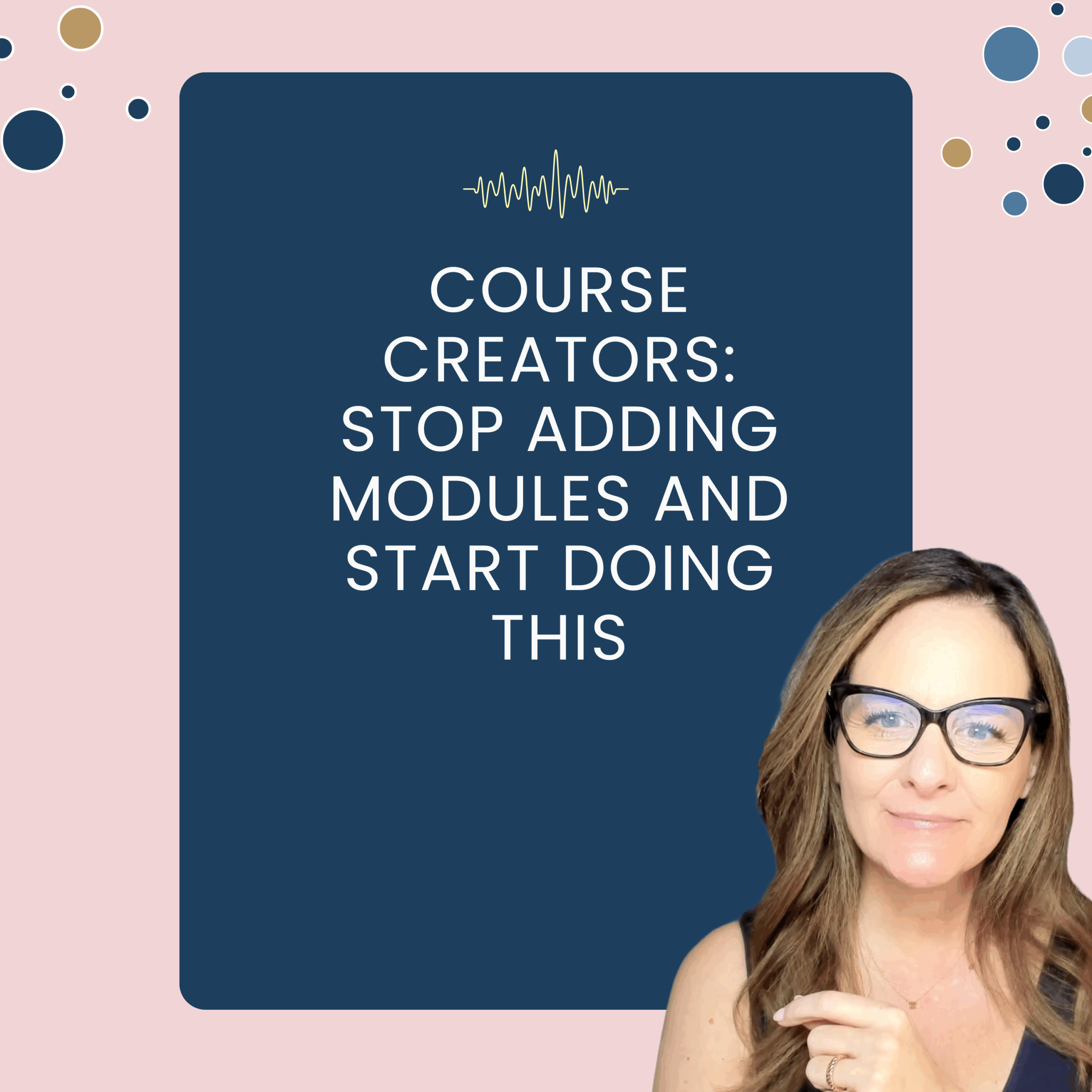🎧 Listen: Apple, Spotify, iHeart
Lists are my love language, and planning my day is a daily calendar item for me. I’m a planner at heart, and today, we’re diving into a topic that’s going to be your new best friend in the world of community building. Drumroll, please! We’re talking about the almighty content calendar. Now, I know what you’re thinking: content calendar, really? But trust me, by the end of this post, you’ll be singing its praises and wondering how you ever lived without one.
What is a Content Calendar?
Alright, let’s kick things off with the basics. What exactly is a content calendar? Imagine a magical tool that helps you plan, organize, and schedule all of your content in one place. Yep, that’s your content calendar – your trusty sidekick in the battle against chaos and inconsistency. Whether you’re a digital junkie who loves Google Calendar, a Trello fanatic, or someone who still enjoys the feel of a good old-fashioned planner, there’s a format out there for you.
The key is finding the one that makes you feel like a planning superhero. For me, I do a hybrid approach. I have a beautiful paper calendar that I like to jot down notes in and track my day. I use Trello for some clients, ClickUp for my own content, and other clients. It’s all about what works for you.
Setting Up Your Content Calendar
Now that we’ve got the basics down, let’s get into the nitty-gritty of setting up your content calendar. First off, choosing the right tool. There are tons of options out there from ClickUp to Asana to some of Circle’s own features. You can utilize Google Sheets. You can use Trello. Really, the sky’s the limit and there’s no wrong answer.
Once you’ve picked your tool, it’s time to load it up with all the juicy details. Think content types like community posts, events, newsletters, and discussions. Don’t forget to add your publishing dates, deadlines, and any themes or keywords. It’s like crafting the perfect recipe for content success.
Planning Content for Your Community
Now here’s where the fun really begins: planning content specifically for your community. Start by aligning your content with your community’s goals. What’s your mission? What do your members want to see? This is your chance to be the content genie and grant their wishes.
Mapping Out Community Events
Mapping out your community’s events is a key part of this process. Think regular webinars, Q&A sessions, workshops, and office hours. These events not only keep your community engaged but also provide valuable learning and networking opportunities. For special events like challenges, collaborations, or guest speakers, you’ll want to plan these well in advance. This gives you plenty of time to promote and generate excitement within your community and ensures everything runs smoothly on the day of the event.
Engaging Content Types
Next up, let’s talk about the different types of content you can include. Interactive content like polls, surveys, and discussions are great for fostering engagement and getting your community members involved. They can spark interesting conversations and provide you with valuable insights into your members’ interests and preferences.
Informative content, such as articles, tutorials, and resources, is essential for providing value to your community. Think about what knowledge or skills your members would like to benefit from and create content that meets those needs. This positions you as a helpful and knowledgeable leader in your community.
Advanced Strategies
Now that we’ve got some of the basics out of the way, let’s take things up a notch. Integrating your content calendar with your overall strategy ensures consistency across all platforms. This is like the secret sauce that ties everything together. If you didn’t already listen to last week’s episode all about batching, you’re going to want to.
Batching and scheduling are your new best friends. Create content in batches and schedule it to go live automatically. It’s like having a clone do the work for you. For example, you can batch create a month’s worth of social media posts in one sitting and then schedule them to post at optimal times.
This rings true in your Circle communities. Create content in batches, schedule it to drop into your community on specific dates and times. This not only saves you time but also ensures you always have content ready to go. No more scrambling at the last minute to come up with something to post. And if you’re working with a team, use the calendar to coordinate tasks, track progress, and keep everyone on the same page.
Teamwork makes the dream work, folks. I can’t begin to tell you how much time and energy I used to put into content planning until I started batch working, setting up the right tools and processes for myself and my team, and scheduling that content. Collaboration is key, especially if you have a team helping you with content creation.
Using the content calendar to assign tasks, set deadlines, and monitor progress keeps everyone organized and accountable. Regular team meetings to review the calendar can help ensure everyone is on track and address any issues or changes. Plus, it fosters a sense of teamwork and collective ownership over the community’s content strategy.
Tool Recommendations
For us, we utilize a couple of different approaches. We use ClickUp internally, and that is our go-to tool. We track everything for our clients in there. We track everything for the podcast, for content planning, you name it. It all lives in ClickUp. Our team has access to the spaces they need, they know what they need to do, and it really allows for a streamlined approach to our business structure.
However, ClickUp can be really intimidating for some. My secondary recommendation is Trello. I have clients that I manage their content plan or help them with their content plan, and they use Trello. Although it’s not part of ClickUp, we have a nice integration so we can still access all of that stuff in one space for us. But at the end of the day, Trello is a great way to do it if ClickUp is too intimidating or overwhelming for you.
Trello is visual and allows you to utilize many digital features, but the barrier to getting started is much lower. If you don’t have a team and you’re a one-person show, you can look at using Google Sheets. I do not recommend using Google Sheets for a team; it can get very clunky fast and mistakes can happen easily. We have a great template for it over on the website. It’s definitely geared more towards a one-person, maybe a two-person show, but as your team grows, your tool should grow too. I recommend using Trello for this.
We started out managing everything on Trello years ago, and as our team and business grew, we knew it was time to up-level, which led us to ClickUp. But if you’re looking for an even lower-cost option, start with Google Sheets. We have templates for both options over on the website that you can check out.
Regular Maintenance
So now that you finally have your content calendar set up, you’ve built in your theme days, and you have a process in place to produce that content, ensuring everything remains consistent across all platforms. What’s next? This is when it’s time to give it a little TLC. Regularly review and update your calendar to keep things fresh.
Conduct content audits to see what’s working and what’s not. Look at those analytics, and remember, flexibility is key. Sometimes you’ll need to pivot and adapt, and that’s totally okay. The best part about content planning is that if you get into a rhythm, do some batch work, and really plan out in advance, you can pivot when needed without scrambling at the last moment.
Set aside time each week or month to review your content calendar. I recommend doing this during community health checks. Look at what content performed well and what didn’t, and use this information to tweak your future plans. Maybe you’ll find that your community loves live Q&A sessions but isn’t engaged with pre-recorded videos. Use these insights to adjust your strategy.
Flexibility is crucial. Life happens, and sometimes things don’t go as planned. Maybe you need to shift content around to accommodate a sudden community event or an unexpected guest speaker. Your content calendar should be a living document, adaptable to changes and new opportunities.
Analyzing Performance
Tracking the performance of your content is essential. Use analytic tools to see how your content is performing and gather insights. Look at metrics like engagement rates, click-through rates, and member feedback. Use this data to refine and improve your content strategy.
It’s like being a content scientist, constantly experimenting and improving. And trust me, your community will thank you for it.
Real-Life Magic: Client Stories
Let’s sprinkle in some real-life magic with a client story to show how different approaches can still yield fabulous results. Personally, I love ClickUp for my content calendar. It’s robust and packed with features. However, I quickly learned that sometimes the barrier to learning new software can lead to total abandonment of any content planning. I encountered
this issue with not one, but two clients. Both were overwhelmed by ClickUp’s complexity and found it intimidating.
Recognizing this, we pivoted to Trello for their content calendars. Trello’s more straightforward, visual interface made a world of difference. It was less intimidating, and the drag-and-drop functionality provided a more intuitive planning experience.
Both clients immediately saw the benefits of this visual approach. They were able to organize their content more effectively and felt more in control of their planning process. By incorporating batch work into their new Trello system, they maintained a consistent content schedule without ever missing a beat. This experience reinforced the importance of choosing tools that align with the user’s comfort level, ensuring they can fully harness the power of content planning.
Success Story: Circle Community
Let’s dive into a success story from a Circle community that brilliantly uses a content calendar to plan their monthly themes and events. By mapping out their content in advance, they ensure a consistent flow of engaging posts, events, and discussions. Their members always know what to expect and stay excited about upcoming activities.
Initially, this content creator felt overwhelmed with the question of “what to create.” We took a step back to analyze what types of content resonated most with their community by doing some surveying and getting some feedback. Unsurprisingly, we discovered that weekly live events yielded the greatest engagement. Armed with this insight, we devised a content strategy that capitalized on these popular live events.
We introduced a structured plan, scheduling these live events as the centerpiece of their weekly content. Then, we filled in the gaps with complementary content types, such as discussion posts, follow-up articles, and member highlights. This mixed approach ensured variety and kept the content fresh and engaging. With this turn-key plan in place, the community could easily pencil out what types of content to create and when to post it. The content calendar provided a clear roadmap, reducing the stress of content creation and allowing the community to thrive with a steady, engaging content flow.
Effective Team Coordination
Let’s explore another fantastic example of a community that effectively uses their content calendar to coordinate a team of moderators and content creators. Each team member has specific responsibilities, and the calendar plays a crucial role in keeping everyone organized and on track.
In this community, the content calendar is the backbone of their operation. It clearly outlines who is responsible for what and when each piece of content needs to be created, reviewed, and published. This structure ensures that nothing falls through the cracks, and everyone knows exactly what they need to do.
By assigning specific tasks and deadlines, the calendar helps the team work seamlessly together. Moderators can easily see upcoming events and discussions, allowing them to prepare and engage with members effectively. Content creators know their topics and deadlines well in advance, which helps them produce high-quality content consistently.
The result? A vibrant, well-managed community where members feel supported and engaged. The smooth coordination facilitated by the content calendar means that the community always has fresh, relevant content, and members know they can rely on a consistent, engaging experience. This organized approach not only enhances member satisfaction but also fosters a strong sense of community.
Conclusion
Alright, my fabulous planners, that’s a wrap on today’s post. We’ve covered the ins and outs of content planning, from the basics to advanced strategies, and even dipped into some real-life examples. The content calendar is your new best friend, ready to transform your Circle community. But before you go, don’t forget to share your content calendar stories with us.
Head over to our website, join The Community Lab, follow us on social media, and grab our downloadable content calendar templates for both Trello and Google Sheets. And, of course, subscribe, leave a review, and share this post with your friends and network.
Until next time, keep planning, keep creating, and keep building those amazing communities. Catch you later. Take care, friends.
In This Episode We Chat About:
- 01:57 Understanding the Content Calendar
- 03:02 Choosing the Right Tools
- 05:21 Advanced Content Planning Strategies
- 11:35 Real-Life Success Stories
- 15:33 Conclusion and Next Steps
Transcript: https://share.descript.com/view/1oD5Bj0yrzw
Craft your content like a pro with our Trello Content Planner Template. This user-friendly template will help you organize and schedule your content effortlessly, ensuring you never miss a beat. Ready to streamline your planning process? Download the Trello Content Planner Template today and see the difference it can make. Start here: Trello Content Planner Template 📅✨
Streamline your workflow with Trello, the ultimate tool for organizing and managing your projects. From task management to content planning, Trello makes it easy to keep everything on track. Ready to boost your productivity? Get started with Trello today using our special link: Trello 📋✨
Elevate your project management with ClickUp, the all-in-one tool for organizing tasks, tracking progress, and collaborating with your team. From detailed project timelines to streamlined workflows, ClickUp has everything you need to stay on top of your game. Ready to take your productivity to the next level? Start using ClickUp today with our special link: ClickUp 🚀✨
Ready to unite your community like never before? Visit Circle.so and begin your free trial today. Transform the way you connect: https://try.circle.so/the-community-lab 🚀🌐
Love my emails? Steal my secret weapon—Flodesk! Try it for free today.
Your community deserves the best—so do you! Get The Scoop, my weekly newsletter packed with insights and strategies. Sign up today!






+ show Comments
- Hide Comments
add a comment